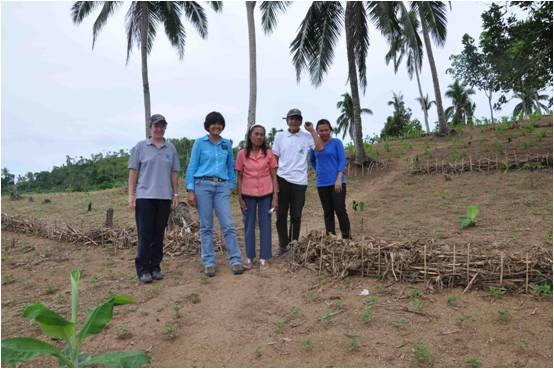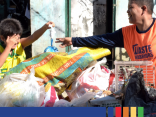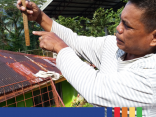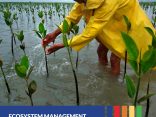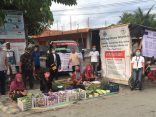Cresencio and Clarita Canono of Lebanon village, Montevista municipality in Compostela Valley province spend most of their time “growing old together" in their contour farm. They are among the most vulnerable households affected by Typhoon Bopha who are, with support from CARE, trying to shift from many years of mono-cropping to diversified, sustainable farming that will contribute to making their livelihoods more resilient.
In late 2012, a region in southern Philippine rarely visited by tropical cyclones was devastated by Typhoon Bopha. Some 6.3 million people were affected, with about 217,000 families having their houses either partially damaged or completely destroyed. Direct damage to agriculture was estimated at EUR482 million. Many of the vulnerable populations most affected by Bopha are still recovering from the adverse effects of the typhoon.
CARE has responded to the emergency by providing food, WASH services, shelter repair kits and NFIs to affected households in remote areas, which are home to indigenous peoples. At present, CARE is providing livelihood support and activity-linked cash transfers to help speed up the recovery of the most vulnerable households. As in previous responses to the disasters that frequently hit the Philippines, disaster risk reduction is incorporated in the response to Bopha. In providing the shelter repair kits, for example, information was also provided on how to rebuild houses that will be more resistant to typhoons. Those whose houses were in high-risk zones were also assisted to rebuild their houses in safer areas. CARE’s responses to Bopha have been supported by the European Commission Humanitarian Aid and Civil Protection department (ECHO).
In helping households rebuild their livelihoods, relay cropping combined contour farming was introduced as a strategy to make livelihoods more resilient. Relay cropping is a form of multiple cropping that allows farmers to grow different crops of different maturation periods. Mono-cropping was extensive in the Bopha-affetced areas and has been pointed to as one of the factors for the magnitude of the disaster.
One of the benefits of relay cropping is that it allows for diet diversification of the household. It also includes growing disaster-resilient crops such as sweet potatoes and cassava. Relay cropping and contour farming are also effective erosion control measures and are environmentally sustainable.
The vulnerable households targeted by CARE have already planted their relay crops and have established model contour farms. While waiting for their crops to mature, household members are going to participate in community-based trainings on sustainable agriculture, organic farming, and community-based disaster risk reduction that incorporates climate change adaptation and ecosystem management and restoration.
The strategy for more sustainable and resilient livelihoods has been embraced with enthusiasm by targeted beneficiaires. The elderly Canono couple are very proud of the contour farm they established on their own. They insisted on the monitoring team to see their farm during a recent ECHO monitoring mission. The Canonos are demonstrating to other community members that with correct motivation, making livelihoods more resilient is possible.

